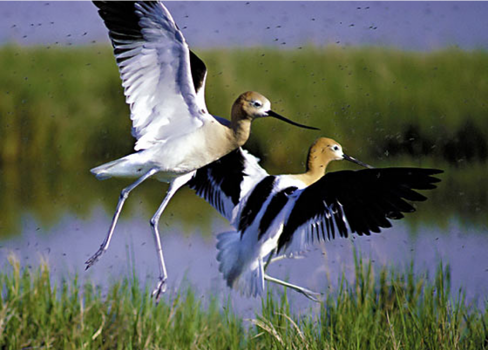Amazing Great Salt Lake
The effective area of the Great Salt Lake Basin is approximately 21,000 square miles. As mapped, its four major subbasins actually encompass 34,363 square miles, but the far West Desert Basin yields only small amounts of groundwater to the lake.
It’s salty. It’s stinky. It’s buggy. Many people think that the water that ends up in the lake has simply gone to waste. Actually, that couldn’t be further from the truth. Great Salt Lake supports a rich and dynamic biological system of regional, national, and global significance. The amazing abundance of bird life at Great Salt Lake has earned it the designation as a “Western Hemisphere Shorebird Reserve.” Each year over seven million birds from 257 different species rely on the lake during their thousand-mile or more migrations. Remote islands, shorelines, and about 400,000 acres of wetlands provide safe sancturary for migratory birds to feed, nest, and rest. These diverse water environments are connected to expansive playas and uplands that create excellent habitats for innumerable plants, invertebrates, reptiles, amphibians, mammals and birds.
Great Salt Lake sits at the bottom of a closed basin. It is a terminal lake with no outlet, so the only way water can leave is by evaporation. For the most part, what goes into the lake, stays in the lake. The vast majority of water flowing into the lake comes from the Bear, Weber and Jordan Rivers. This fresh water contains naturally occurring dissolved minerals and salts, which get left behind during evaporation. Over many thousands of years this has created a salty inland sea.
Of course, minerals and salts aren’t the only things that never leave the lake. Chronic levels of heavy metals, such as mercury, and excess nutrients from human activities are among the pollutants of concern. Our place in the Great Salt Lake Watershed means that Salt Lake County residents can help protect the health of the lake ecosystem.
